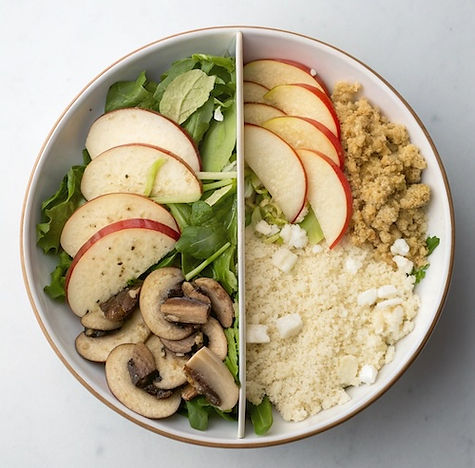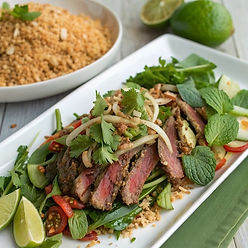Balancing Moisture and Crunch in Composed Salads

The judge's observation that the apple with the mushroom creates a lot of juiciness demonstrates sophisticated understanding of how moisture balance affects salad success, while Jet's toasted rice provides essential crunch creating dynamic interplay between wet and dry elements. Salads fail when they're uniformly wet and limp or uniformly dry and chewy, but excel when they offer progression of textures and moisture levels within single bite. Jet's waterfall salad achieved this balance through strategic component selection: juicy elements including lime-dressed yum sauce providing acidic moisture, julienned apple contributing crisp wet crunch, sautéed mushrooms releasing their absorbed moisture, and fresh herbs adding leafy juiciness, balanced against dry crunchy elements including toasted rice powder providing signature crunch and optional crushed peanuts adding oily crunch and richness. The apple-mushroom pairing judges specifically praised works because tart apple prevents earthiness of mushrooms from becoming heavy while adding moisture that prevents mushroom's sometimes-dry texture, and combination creates more complex mouthfeel than either ingredient alone. When designing composed salads with protein, strategic moisture management requires understanding ingredient properties: proteins like beef, chicken, or tofu can be dry without sauce or marbling, leafy greens wilt when overdressed but taste bland when underdressed, fresh herbs provide aromatic moisture, raw vegetables like cucumber, tomato, or radish contribute watery crunch, cooked vegetables like roasted peppers or grilled eggplant offer concentrated moisture, pickled elements add vinegary wetness, and dressings provide liquid coating tying everything together. The technique for maintaining optimal moisture balance involves several strategies. First, cook proteins properly so they retain natural juices rather than drying out, as judges noted Jet's beef eating nice and tender despite appearing slightly overcooked. Second, dress salad just before serving so greens and crunchy elements don't sit in liquid becoming soggy. Third, add very crunchy elements like toasted rice powder, fried shallots, or crispy wonton strips at last moment preserving textural impact. Fourth, consider temperature contrast where warm protein against cool greens creates moisture through condensation, requiring serving immediately before this occurs. Fifth, layer moisture strategically by placing wetter components on bottom where they won't drip onto crunchy elements prematurely. The crunch preservation specifically requires understanding that crispy elements turn soggy through two mechanisms: direct liquid contact from dressing or juicy components, and humidity absorption from environment or steam from warm components. Solutions include serving crunchy garnishes on side for diners to add themselves, applying them immediately before service, using enough quantity that some remaining crunchy even if some softens, or accepting that first bites will be crunchiest and designing salad progression accordingly. Other successful moisture-crunch balances include Caesar salad's crisp romaine and crunchy croutons against creamy dressing, Vietnamese bun with fresh herbs and crushed peanuts against fish sauce dressing, or Southwestern salad with crispy tortilla strips against creamy avocado and juicy tomatoes. Jet's smart choices resulted in judges praising this is delicious because moisture balance was considered throughout: beef provided savory richness, apple-mushroom combo added juiciness, fresh herbs contributed aromatic moisture, yum dressing tied everything together, and toasted rice powder delivered essential crunch that remained texturally distinct creating dynamic eating experience where each bite offered progression through different moisture levels and textures rather than uniform mushy or dry salad.


